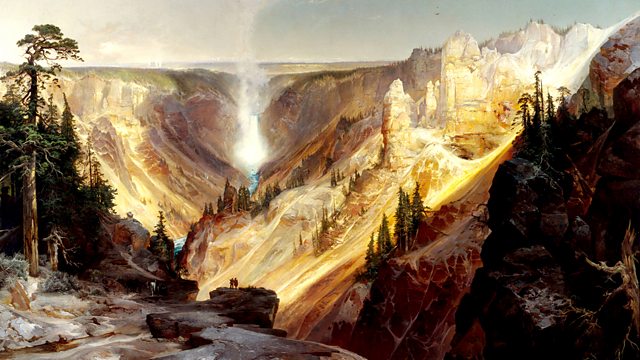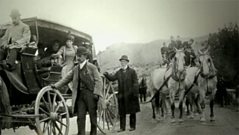
Yellowstone
How the influence of European Romanticism recast Yellowstone as a place to witness the raw power of God in nature, rather than a satanic place to be tamed and cultivated.
As the world's first national park, Yellowstone has long served as a model for the protection of wilderness around the world. For Americans it has become a source of great national pride, not least because it encapsulates all our popular notions of what a wilderness should be - vast, uninhabited, with spectacular scenery and teeming with wildlife. But Yellowstone has not always been so. At the time of its creation in 1872, it was renowned only for its extraordinary geysers, and far from being an uninhabited wilderness it was home to several American Indian tribes.
This film reveals how a remote Indian homeland became the world's first great wilderness. It was the ambitions of railroad barons, not conservationists, that paved the way for a brand new vision of the wild, a vision that took native peoples out of the picture. Iconic landscape paintings show how European Romanticism crossed the Atlantic and recast the American wilderness, not as a satanic place to be tamed and cultivated, but as a place to experience the raw power of God in nature. Forged in Yellowstone, this potent new version of wilderness as untouched and deserving of protection has since been exported to all corners of the globe.
Last on
Clip
-
![]()
Yellowstone: an early tourist destination
Duration: 02:06
Credits
| Role | Contributor |
|---|---|
| Narrator | Deborah Maclaren |
| Executive Producer | Neil Nightingale |
| Series Producer | Andrew Murray |
| Producer | Susie Painter |
Broadcasts
- Thu 16 Jun 2011 21:00
- Fri 17 Jun 2011 00:15
- Fri 17 Jun 2011 03:25
- Sun 26 Jun 2011 02:05
- Sat 14 Jan 2012 19:00
- Sun 15 Jan 2012 02:30
- Tue 1 May 2012 21:00
- Wed 2 May 2012 02:20
- Tue 30 Oct 2012 20:00
- Sun 3 Nov 2013 19:00
- Mon 4 Nov 2013 02:20
- Sat 7 Feb 2015 19:00
- Tue 20 Oct 2015 20:00
- Thu 22 Oct 2015 02:00

